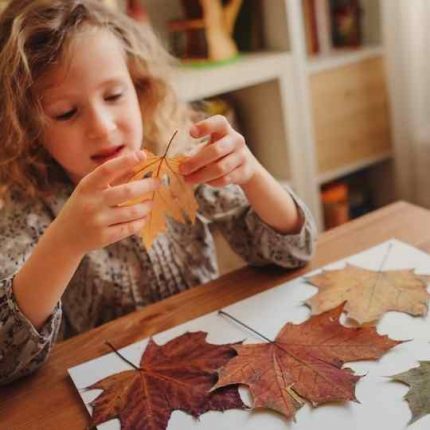
Kid Activities that Encourage a Heart of Gratitude
November 14, 2019This post is written by a guest contributor.
November is the time of year when we start thinking about what we are grateful for, but we should have a heart of gratitude all year long. How do we cultivate a continual heart of gratitude? How can we teach our children to be grateful? We don’t want the act of gratitude to
be forced or superficial. There are ways for us to help our children learn to be grateful genuinely. Setting the example for a grateful heart is key. Children pattern only what they see. It starts with us, the parents.
Lead by Example
Are we showing our children what a heart of gratitude looks like? Are we saying thank you to those who provide a service for us? Do we express our gratitude to our families? Are we looking for things to be grateful for, or are we negative, critical and complaining? Gratefulness should part of our daily lives. Something we are always thinking about. I have found a number of activities that help encourage my children, as well as myself, to have a heart of gratitude.
Listen to our podcast on Instilling a Heart of Gratitude in our Children.
Grateful Conversation Starters
This idea is perfect for the dinner table. Print or write your conversation starters out and place them into a decorative “count your blessings jar”, a mug with a gratefulness quote printed on it, or some other special container. Choose one randomly and have everyone answer.
- What is your favorite part of our home?
- What abilities are you grateful for?
- What is one of your favorite things to do? Why?
- What is your favorite season?
- How does it feel to be nice to someone?
- What is something that makes you happy?
- One of your favorite things about today…
- Have each member of the family write ideas out.
Practice Acts of Kindness
It’s difficult to be grateful if we are focused on ourselves and what WE want. Doing something for others helps us to have the right heart attitude.
- Clean your room without being told
- Let someone take a turn before you
- Help someone struggling with something
- Smile at everyone you see today
- Leave a kind note for someone
- Ask someone playing alone to play with you
- Pick up trash in your neighborhood
- Only let kinds words out
- Pick a few toys to donate
- Make it a no complaining day
- Make a card for someone special
- Write a thank-you note to someone
- Do a sibling’s chore
- Send a card to a soldier
- Help out at a food bank, soup kitchen, or homeless shelter
Grateful Journals
Everyone morning we sit down and write 3 things we are grateful for in our Grateful Journals. I encourage my kids to really think about this, not just write the same thing every day. My 5-year-old was grateful for baskets to carry things in and chairs so we have somewhere to sit. You can
allow your children to think of their own things, give them certain categories or give them questions to answer. The reason we do this in the morning is to create the right spirit for the rest of our day. If someone gets grumpy I can ask them to remember what they were grateful for that morning and that usually helps to change their attitude.
Grateful Scavenger Hunt
- This is a fun game to play and can be tailored to play while driving in the car.
- Find something that makes you happy
- Something to give someone else to make them smile.
- Find one thing that you love to smell.
- Find one thing you enjoy looking at.
- Find something that’s your favorite color.
- Find something that you are thankful for in nature.
- Find something that you can use to make a gift for someone.
- Find something that is useful to you.
Gratitude Craft Projects
- Make a Gratitude Pumpkin at Thanksgiving or in the fall. Start at the top of the pumpkin. With a
permanent marker write “We are thankful for…” then add 1-3 things each day writing in a spiral
around the pumpkin. This makes a perfect centerpiece on your table for Thanksgiving dinner. - Print off pictures of family and friends or cut words out of magazines to make a grateful collage.
- Collect slips of paper each with your gratitude for a month and read all of the slips at the end of
the month. Challenge everyone to be creative.
Gratitude Wall
- Hang a dry-erase board or large sheet of paper on the wall where you will see it frequently.
When you pass by, write something down. - Keep a stack of 3×5 cards(or cut out hearts) and a selection of pens or markers to write down
your gratitude and display them on the wall.
The Benefits of Gratefulness
Homeschooling my children is something I am deeply grateful for and being home with them throughout the day gives me ample opportunity to cultivate that heart of gratitude in my children. When their hearts and minds are full of gratitude there is no room for anger, disrespect,
rudeness, entitlement, etc… It shouldn’t surprise me that having a heart of gratitude will change attitudes and make us feel good. God tells us it will. Proverbs 15:13,15 “A merry heart maketh a cheerful countenance: but by sorrow of the heart the spirit is broken. A merry heart doeth good like a medicine: but a broken spirit drieth the bones.”
An ungrateful, negative attitude can be extremely destructive, especially if our children see that in us and then grow up to follow our ways. Most importantly I need to teach my children to whom they should ultimately be grateful. God.No matter what they are grateful for, it is all because of God’s love, mercy, and grace. Psalm 107:1 “Oh give thanks unto the Lord, for he is good: and his mercy endureth forever.
Amanda Sims – Volunteer Contributor

Amanda Sims has been homeschooling since 2005. She and her husband, DJ, married in 1999 and are parents to seven girls and two boys. Amanda and her family moved to Texas from Colorado, where she was born and raised. She is actively involved in her church, enjoys reading, and loves to travel. Over her many years of homeschooling, she has learned the importance of schooling to the individual learning style of each of her children, schooling year-round, and teaching multiple ages. Hear Amanda’s homeschool story here!
Latest Posts

Guest Post by Gabriel Morse For several years, I sat for long hours every day behind one of those battleship gray desks in a windowless, dull, gray office. The pay was enough to take care…
Read more >
This post is sponsored by Little Monsters Universe. I'm Tina Salmanowitz, an advocate for homeschooling and science education. With over a decade of experience as a science educator (in class…
Read more >
This post is sponsored by Time4Learning. Before the pandemic, it was business as usual for Boca Raton resident Nikki Warris. Her two daughters, 5-year-old Natalie and 8-year-old Lexi were…
Read more >

